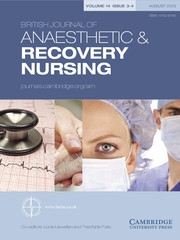WELCOME
Welcome to the third edition of Transfusion Matters. This newsletter is produced for hospitals by the National Blood Service Transfusion Liaison Nurse (TLN) team. The National Blood Service is a part of NHS Blood and Transplant (NHSBT). The National Blood Service is currently undergoing a national re-organisation in order to make the services it offers to donors and patients more up to date and customer focused. We believe this will lead to a more efficient and streamlined organisation.
Our core purpose is to save and improve patient lives. The TLN team is helping to raise the awareness of transfusion issues in hospitals. This newsletter is one of our initiatives for raising awareness and sharing information. We welcome your comments and suggestions for inclusion in future editions. If you have any comments or suggestions please e-mail the author at [email protected]
EXPLANATION OF A BLOOD PACK LABEL
All blood components have several labels applied by the National Blood Service which give information that is important for staff who administer it. These labels also allow for the origins of the product to be traced.
When a unit of blood is selected for a specific patient the hospital blood bank should provide an additional label, affixed to the blood pack, with the patient's details on. The final patient identity check must be done at the patient's side. The information on the blood pack must match the information on the patient's identity band. Identity should be confirmed by asking the patient their full name and date of birth. If there are any discrepancies DO NOT PROCEED and contact the hospital blood bank.
TRANSFUSION SAFETY BOOKMARK
As part of a project with Blood Services in the UK, the Transfusion Liaison Nursing Team have produced this Blood Safety Bookmark for use by hospital staff involved in the transfusion process. The bookmark shows 10 Transfusion ‘Commandments’, which highlight key messages that underpin the safe and appropriate use of blood. The bookmark's handy size makes it useful for staff to carry around as a memory aid. Hospital staff already using this bookmark have reported that it is a useful tool. If you would like a supply of bookmarks for your area of work, please contact your hospital Transfusion Practitioner who can order them from the NBS Transfusion Liaison Nurse Team. The bookmarks are supplied free of charge.

INFORMATION FOR PATIENTS ABOUT BLOOD TRANSFUSION

It is important that all patients about to undergo a planned blood transfusion have been given adequate information well in advance. In the case of a child or patient who is incapacitated, the patient's relatives, next of kin or elected representative, should be given this information. There are three main factors that patients (or the patient's representative) need to understand about why they need a blood transfusion:
- What are the benefits?
- What are the possible risks?
- Are there any alternatives?
Patients will also want to know how it will make them feel. They should be made aware of possible adverse reactions to the transfusion and the importance of reporting these immediately to staff looking after them. It is the responsibility of the staff administering the transfusion as well as the doctor who prescribes it, to ensure that patients have the information necessary to be able to consent to the procedure even though written consent is not required. NHSBT produces a series of information leaflets for patients. There are specially designed leaflets for children and their parents. For more information, please contact your hospital Transfusion Practitioner or visit www.blood.co.uk/hospitals/library.

WHAT ARE HLA MATCHED PLATELETS?
Human leucocyte antigens (HLA) are proteins found on the surface of most cells of the body including leucocytes (white blood cells) and platelets. These antigens help the immune system to distinguish ‘self’ from ‘non-self’ and detect foreign substances. Matching for HLA is important for some patients undergoing a transplant or receiving a transfusion.
WHY ARE THEY NEEDED?
Exposure to HLA antigens during pregnancy or by having a blood transfusion can cause the formation of HLA antibodies. In future platelet transfusions, these antibodies can destroy platelets of a ‘foreign’ HLA type and therefore the patient will have a poor response to standard platelet transfusions (there will be no rise in their platelet count). If HLA antibodies are thought to be present, the patient is HLA typed. HLA typing is a measure of the patient's unique (genetic) tissue type. Platelets can then be selected which are more closely matched to the patient's tissue type (HLA matched). This reduces the risk of the patient's HLA antibodies destroying the transfused platelets.

HOW ARE THEY OBTAINED?
The NBS keeps a database of HLA typed donors and sufficient supplies are maintained to meet hospital requests. Informing the NBS of the patient's platelet count after each HLA matched platelet transfusion helps to ensure that the most effective platelets are selected for subsequent transfusions. An NBS ‘HLA Selected Platelets Follow Up Form’ is supplied with HLA matched platelets for clinical staff to complete and return to the NBS. The NBS Transfusion Liaison Nurse team has developed a poster about HLA matched platelets to raise awareness amongst clinical staff on hospital wards about this important issue. For more information and details of how to obtain a poster, please contact your hospital Transfusion Practitioner.








